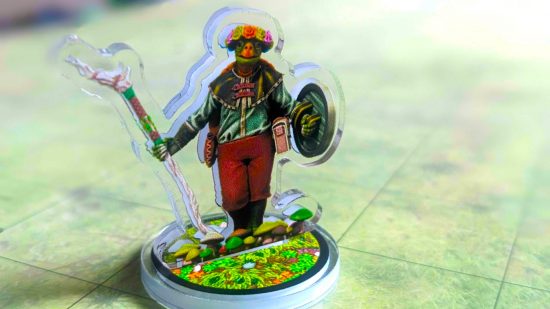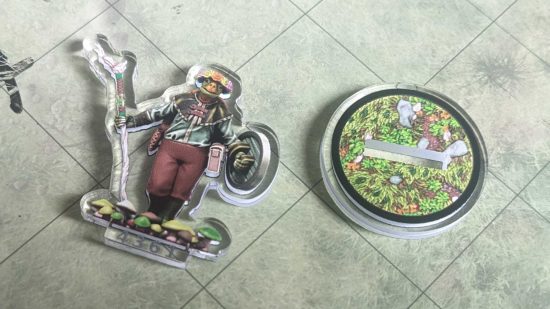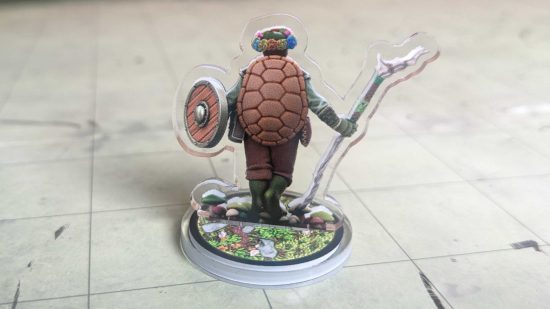I am not much of a DnD miniatures girl. I’ll easily lose hours building a custom mini for my beloved Dungeons and Dragons character, but I often back out when it comes to buying the damn thing. With no access to a 3D printer, a knack for blobby paint jobs, and a tendency to fail Sleight of Hand checks, a fiddly grey bit of plastic doesn’t really appeal. What does tickle my fancy is one of Hero Forge’s alternative products – the acrylic standee.
Priced at $12.99 (£10.25) plus shipping, acrylic standees are the 2D answer to DnD miniatures. You’ll create your custom Hero Forge figure as normal, but an image of the front, back, and base is printed on the acrylic. You get all the colors you want without having to buy any paints for miniatures, and the base of the standee can be removed for easy storage.
Hero Forge kindly offered me a code to test the standees out, and I was immediately keen. I’ve had a Hero Forge mini stuck in digital limbo for some time now, so this seemed like the perfect opportunity to bring him to life.
Meet Ortle the Tortle. He’s a level six Circle of Spores DnD Druid that I’m playing in my current Wild Beyond the Witchlight 5e campaign. Isn’t he cute?
Despite being able to reanimate the dead with magical spores, Ortle is an absolute sweetheart, a cinnamon bun of a humanoid. I could have given him a great big grin with Hero Forge’s recently added face customization options, but I went for something subtler. Ortle is about quiet Wisdom, not all-out Charisma – unless he’s using his magical flower crown to buff Persuasion checks, that is.
Choosing the color scheme for Ortle’s flower crown took the longest, as did changing the color of every mushroom cap. He’s also equipped with his handy Shillelagh staff and a shield, since he can’t wear any DnD armor.
But enough about design – what about the standee itself? Overall, I’m pretty impressed with the quality. The acrylic feels sturdy, and I’m not likely to accidentally snap Ortle in half. The base and standee separate easily, but they also stay together when needed, making it easy to move Ortle across a physical DnD map. And while the image is a tiny bit grainy up-close, it’s great quality given the small size of the standee.
Hero Forge’s website does warn that drift is a possibility during the laser printing of a standee. “As a result, the bleed around your art may vary slightly in thickness from one side to the other”, it says. Plus, “the laser cutting process may leave a small amount of soot or discoloration on the edge of printed art”.
If I squint at my mini, I can see a hint of a fuzzy white outline around him. The effect is more noticeable when you view the mini at an angle – which you will be if you’re playing at a table. However, this doesn’t ruin the effect of the standee for me.
I’m a little more put off by Hero Forge’s shipping costs. It’s estimated at only $7.99 (£6.31) for Americans, but $19.99 (£15.78) for anyone in the United Kingdom (like me). Unfortunately, it’s probably cheaper for me to stick to miniatures and befriend someone with a 3D printer.
But if you’re in the US, shipping will be the same whatever kind of plastic you prefer. If you like colorful minis but can’t stand painting miniatures, an acrylic standee might just be the way forward.
For more tabletop updates, be sure to follow Wargamer on Google News. And for more Dungeons and Dragons, here’s everything you need to know about DnD classes and DnD races.


